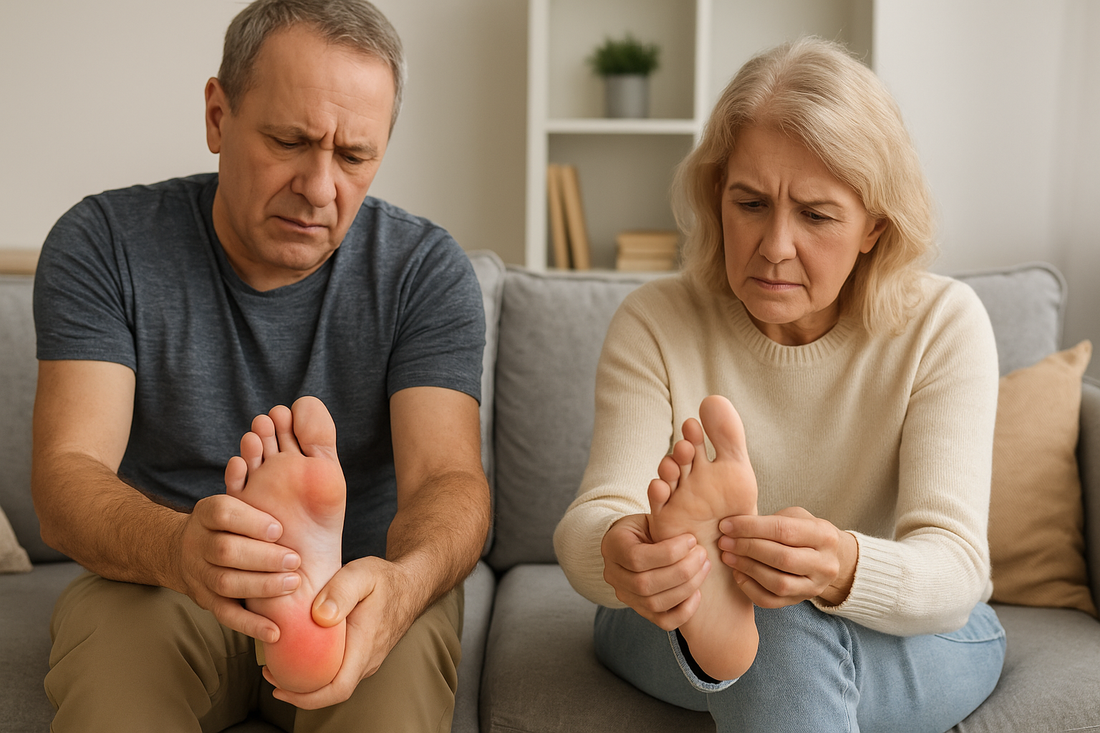
Diabetes and Foot Problems: Who’s More at Risk-Men or Women?
Share
1. Introduction: Diabetes and Your Feet
Diabetes affects millions worldwide, and one of its most common complications involves foot health. High blood sugar levels can lead to nerve damage, poor circulation, and slow-healing wounds—making the feet particularly vulnerable. But when it comes to gender, who faces a higher risk of diabetes-related foot problems: men or women?
2. Men vs. Women: Who Gets Diabetes More?
Research shows that diabetes prevalence slightly differs between genders:
- Men are generally more likely to develop Type 2 diabetes earlier than women due to higher visceral fat levels and lifestyle factors.
- Women, on the other hand, may experience more complications from diabetes once diagnosed, especially involving heart and nerve health.
This means men are more likely to be diagnosed, but women may face a greater risk of severe complications—including foot problems.
3. Why Diabetes Affects Foot Health
Diabetes impacts the feet in several ways:
- Peripheral neuropathy – nerve damage leads to numbness, tingling, or burning sensations, making it harder to detect injuries.
- Poor circulation – reduced blood flow delays healing and increases infection risk.
- Higher infection risk – small cuts or blisters can escalate into ulcers if untreated.
- Foot deformities – conditions like hammertoes, bunions, and Charcot foot are more common among diabetic patients.
4. Gender Differences in Diabetic Foot Problems
-
Men
- More likely to develop foot ulcers due to higher activity levels and less frequent foot care.
- Tend to delay medical consultation, leading to late detection of infections
- Higher incidence of toe amputations due to untreated ulcers.
-
Women
- Have a slightly lower ulcer risk but face greater nerve-related complications.
- Hormonal factors can worsen circulation issues.
- Foot deformities like bunions and hammertoes are more common, increasing pressure points that lead to wounds.
5. How 26 Apothecary Helps Manage Diabetic Foot Health
If you or a loved one has diabetes, proper foot care is critical—and that’s where 26 Apothecary comes in.
Their podiatrist-recommended products are designed to protect, cushion, and support diabetic feet:
- Cushion Gels & Heel Pads – reduce friction and prevent wounds.
- Toe Separators & Splints – relieve pressure from bunions and hammertoes.
- Sports Orthotics – improve balance, reduce stress, and protect sensitive feet.
Explore the full diabetic foot-care collection here: 26Apothecary.com.
6. Tips for Preventing Diabetes-Related Foot Issues
- Inspect your feet daily for cuts, blisters, or swelling.
- Choose diabetic-friendly footwear with adequate cushioning and support.
- Moisturize regularly but avoid excess moisture between toes.
- Avoid walking barefoot, even at home, to prevent accidental injuries.
- Schedule regular podiatric checkups to catch issues early.
While men are more likely to develop diabetes, women may face more severe nerve and circulation-related complications. Regardless of gender, foot care is essential for preventing ulcers, infections, and long-term damage.
With expert-approved products from 26 Apothecary, you can take proactive steps to protect your feet, improve comfort, and maintain mobility—because healthy feet mean a healthier, more active life.
